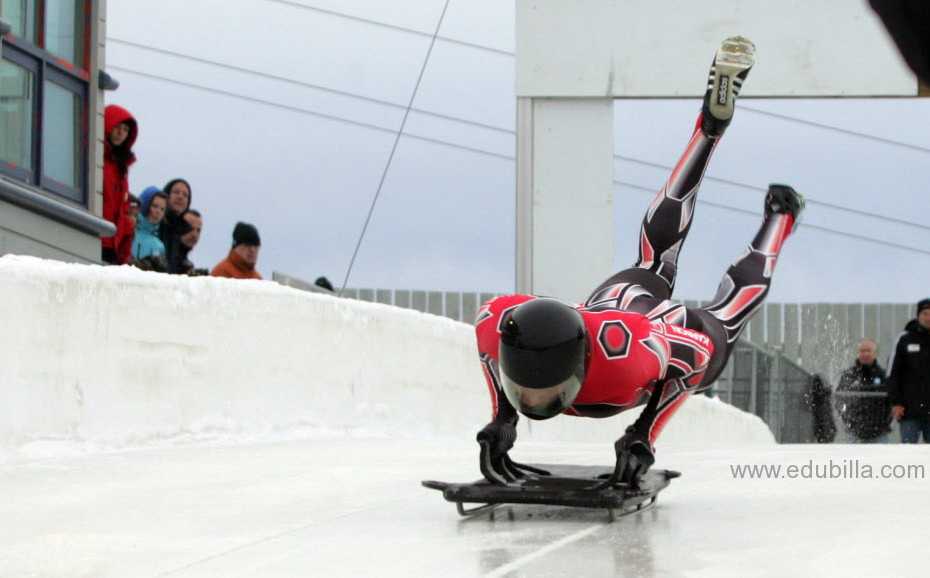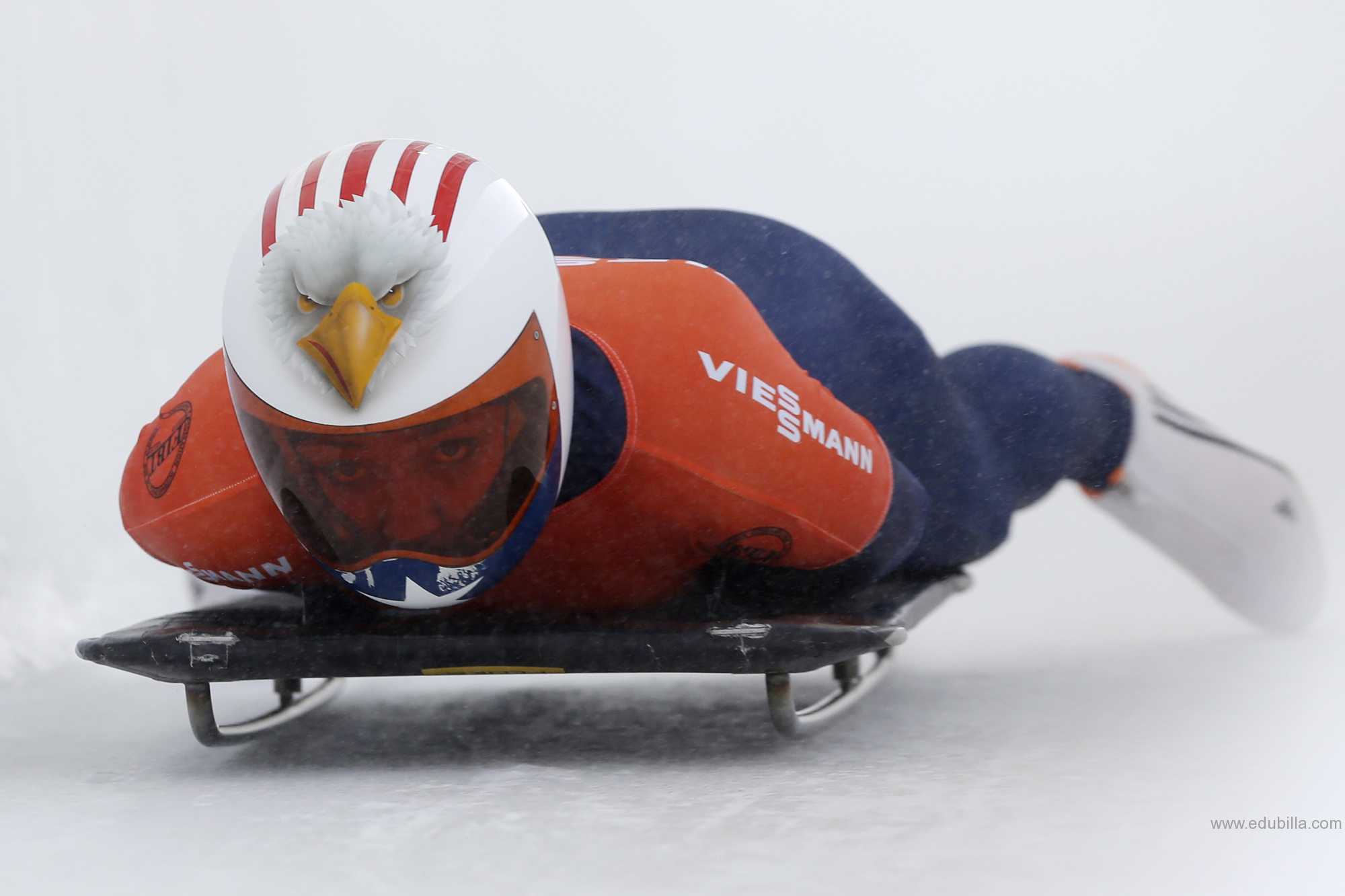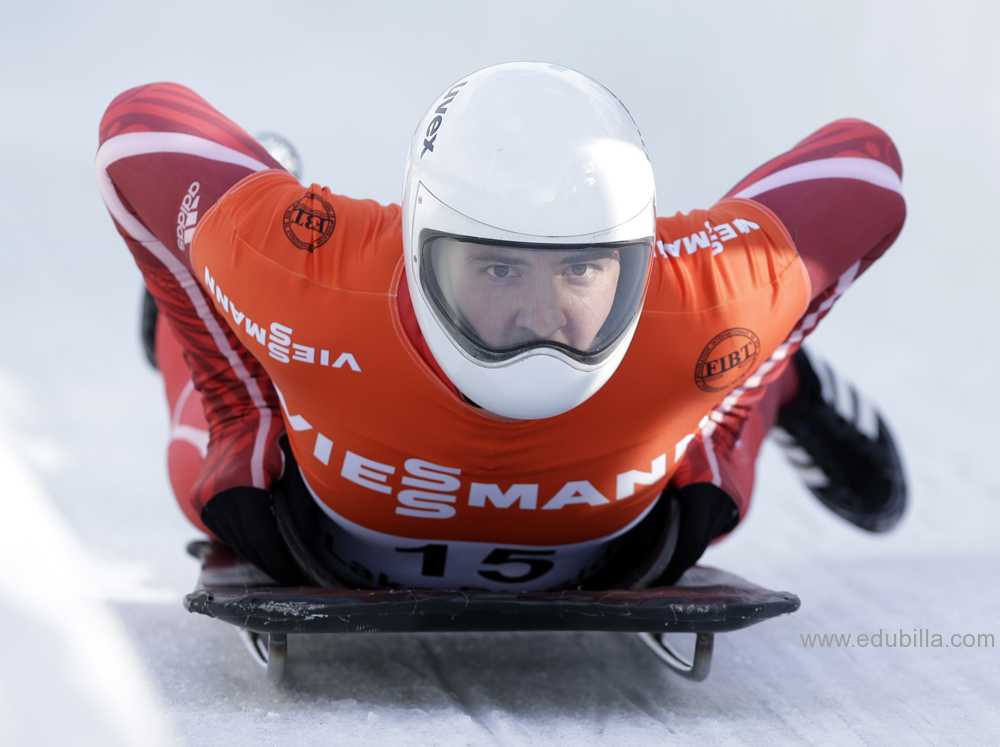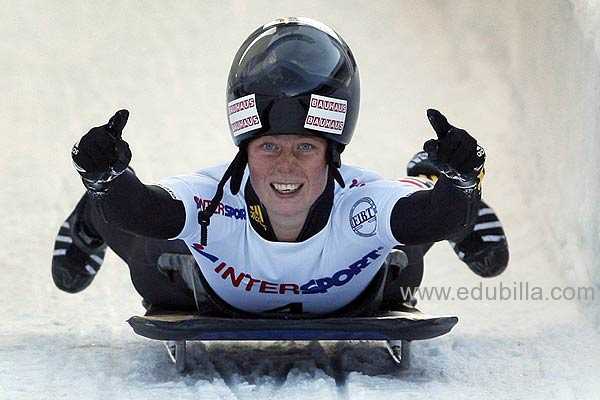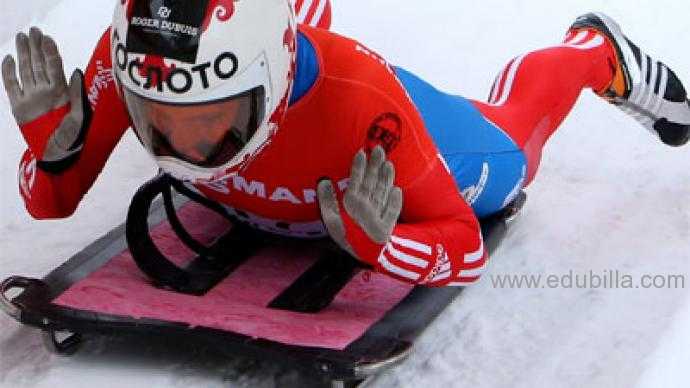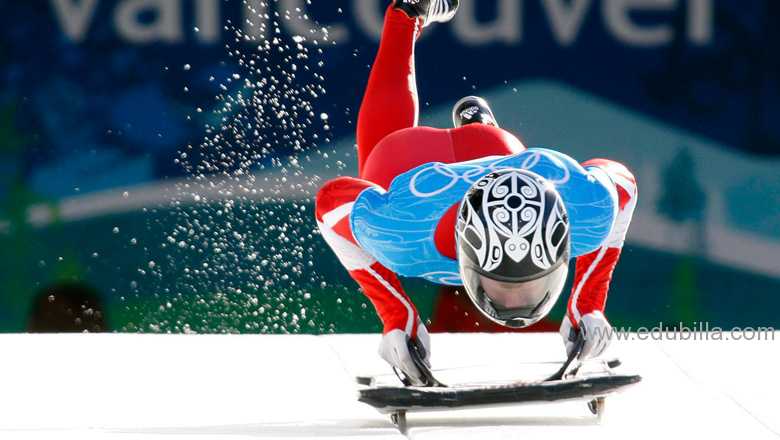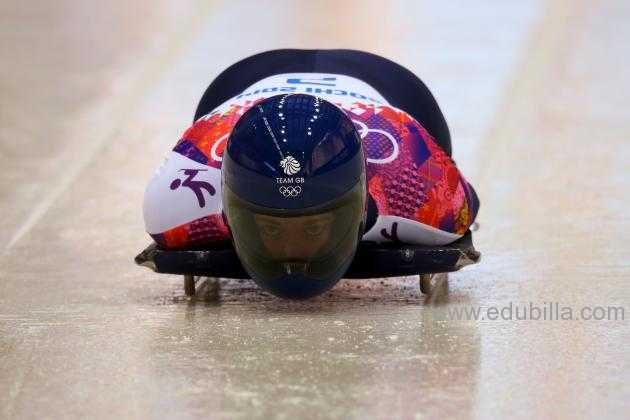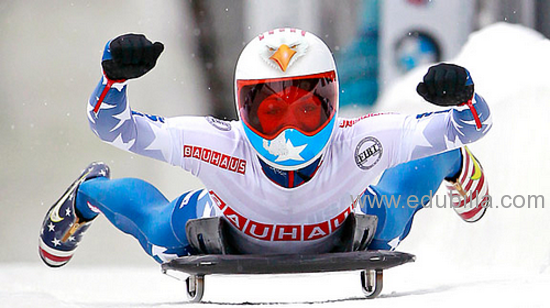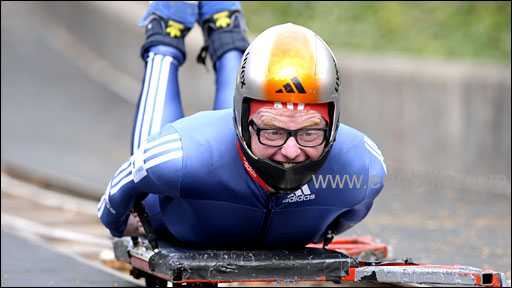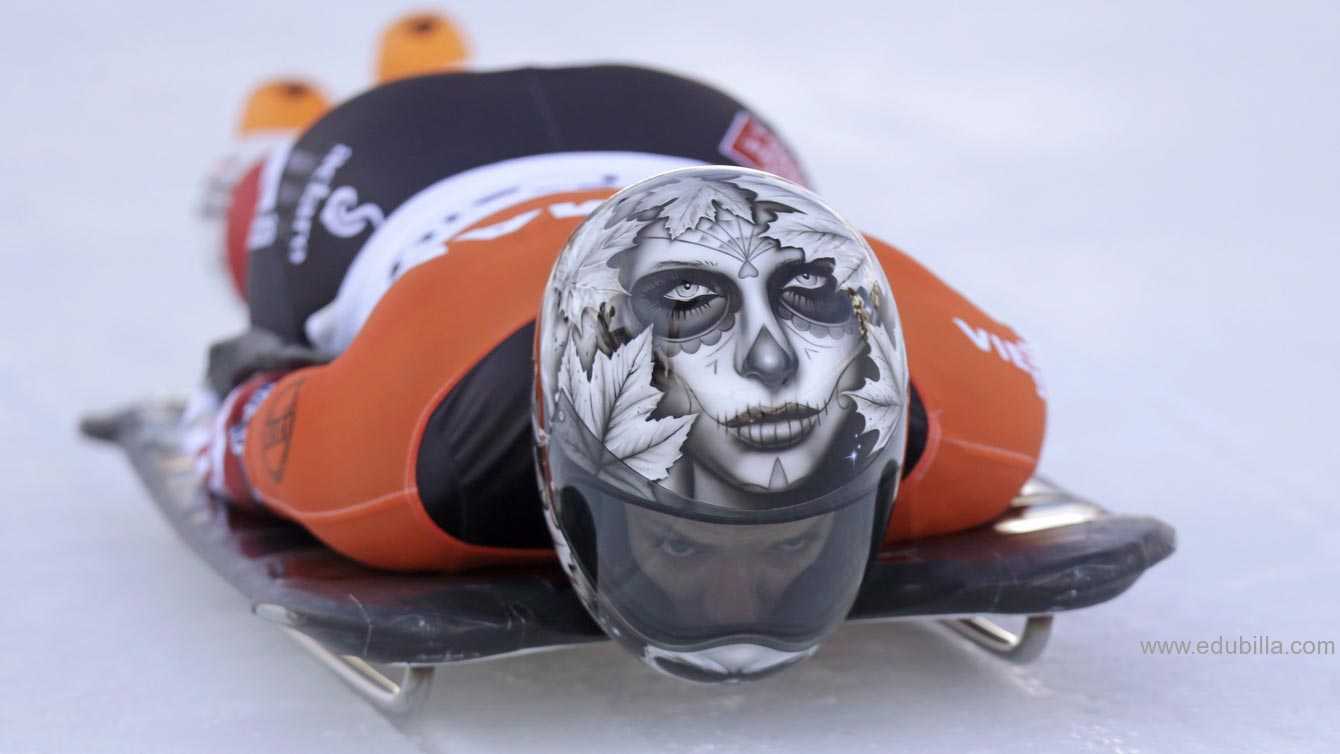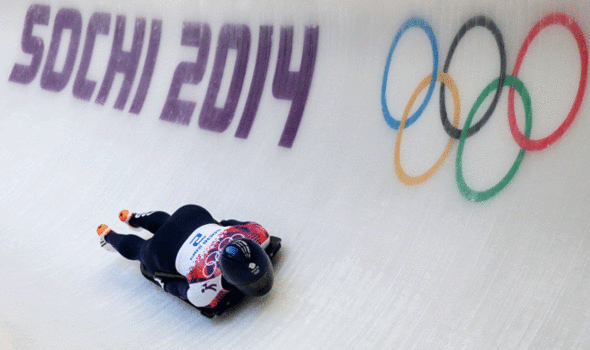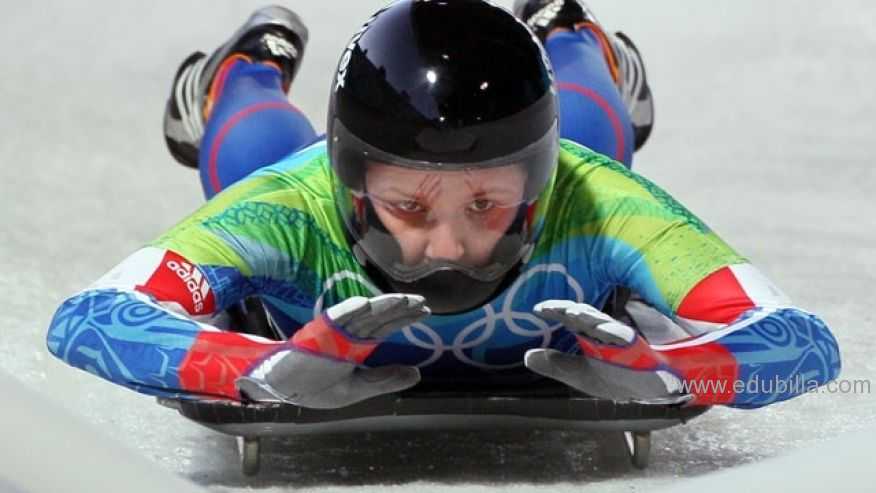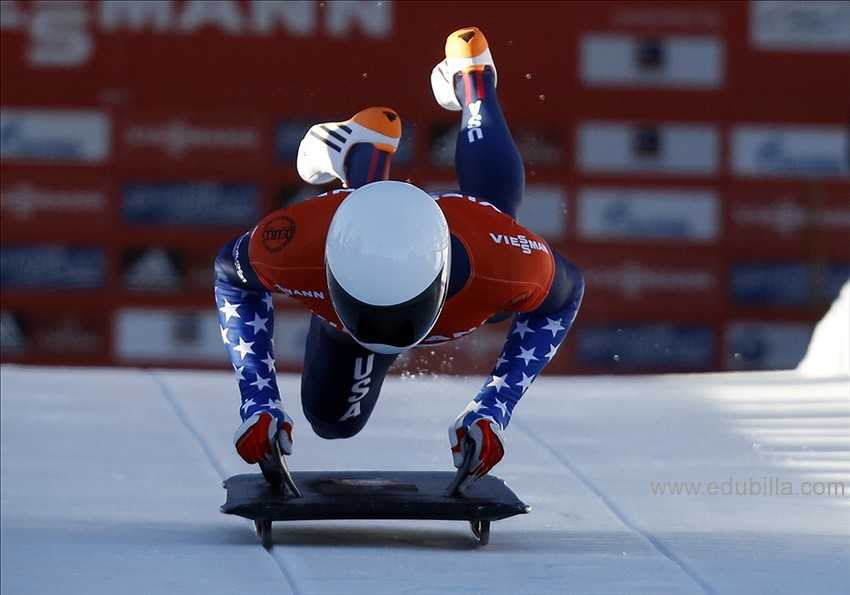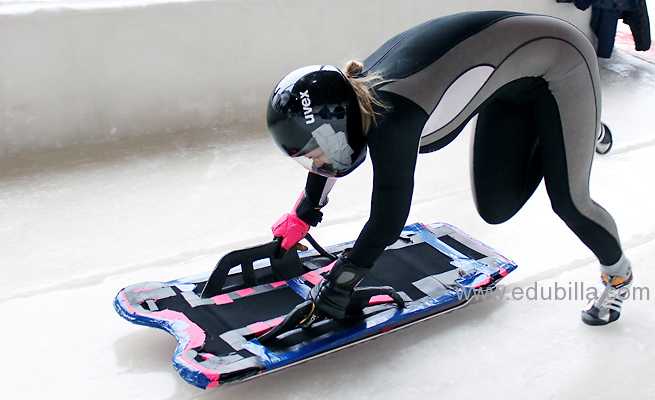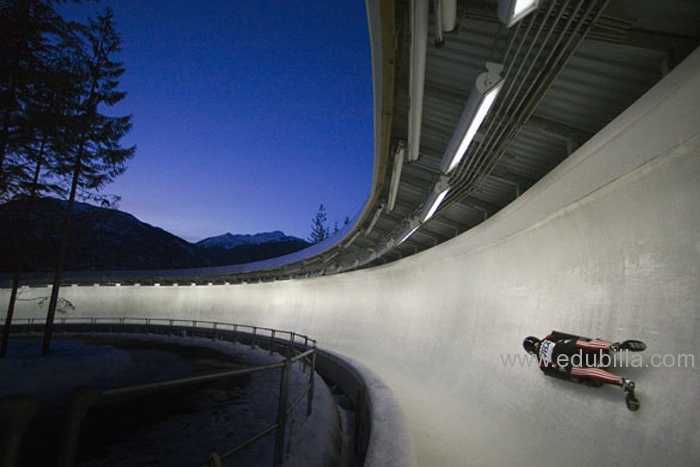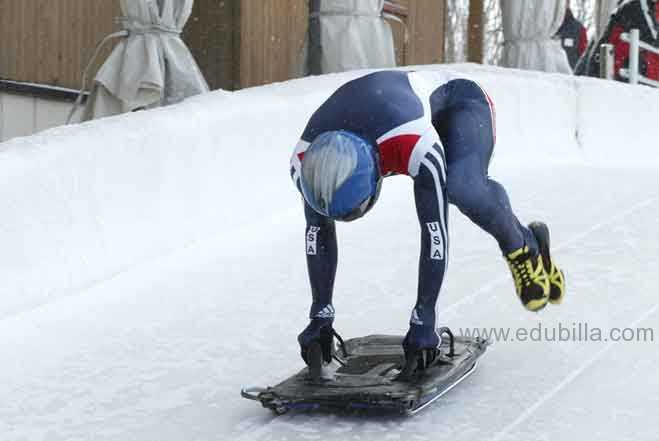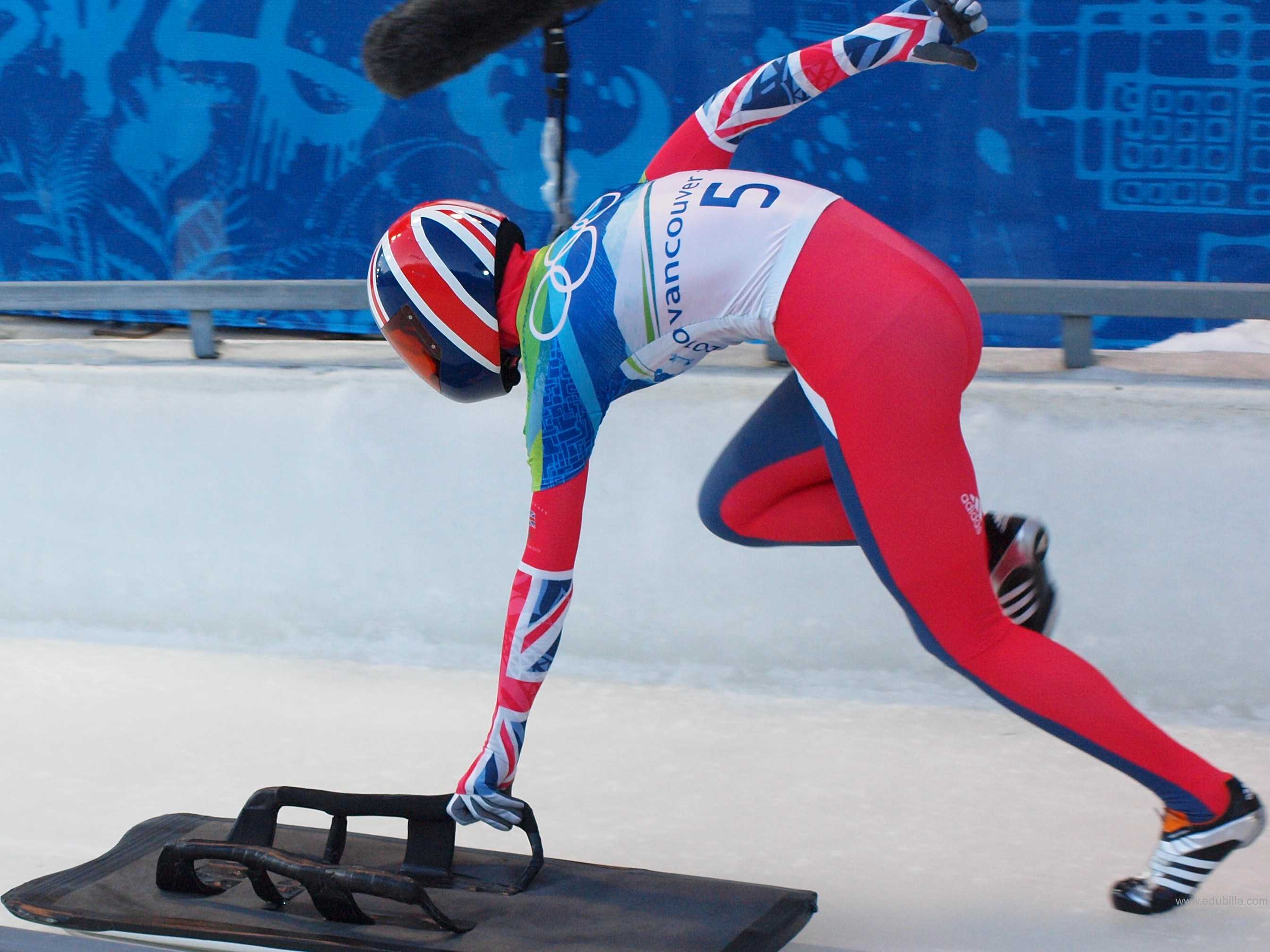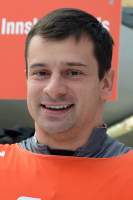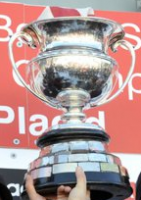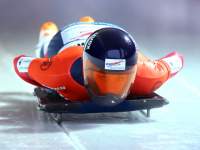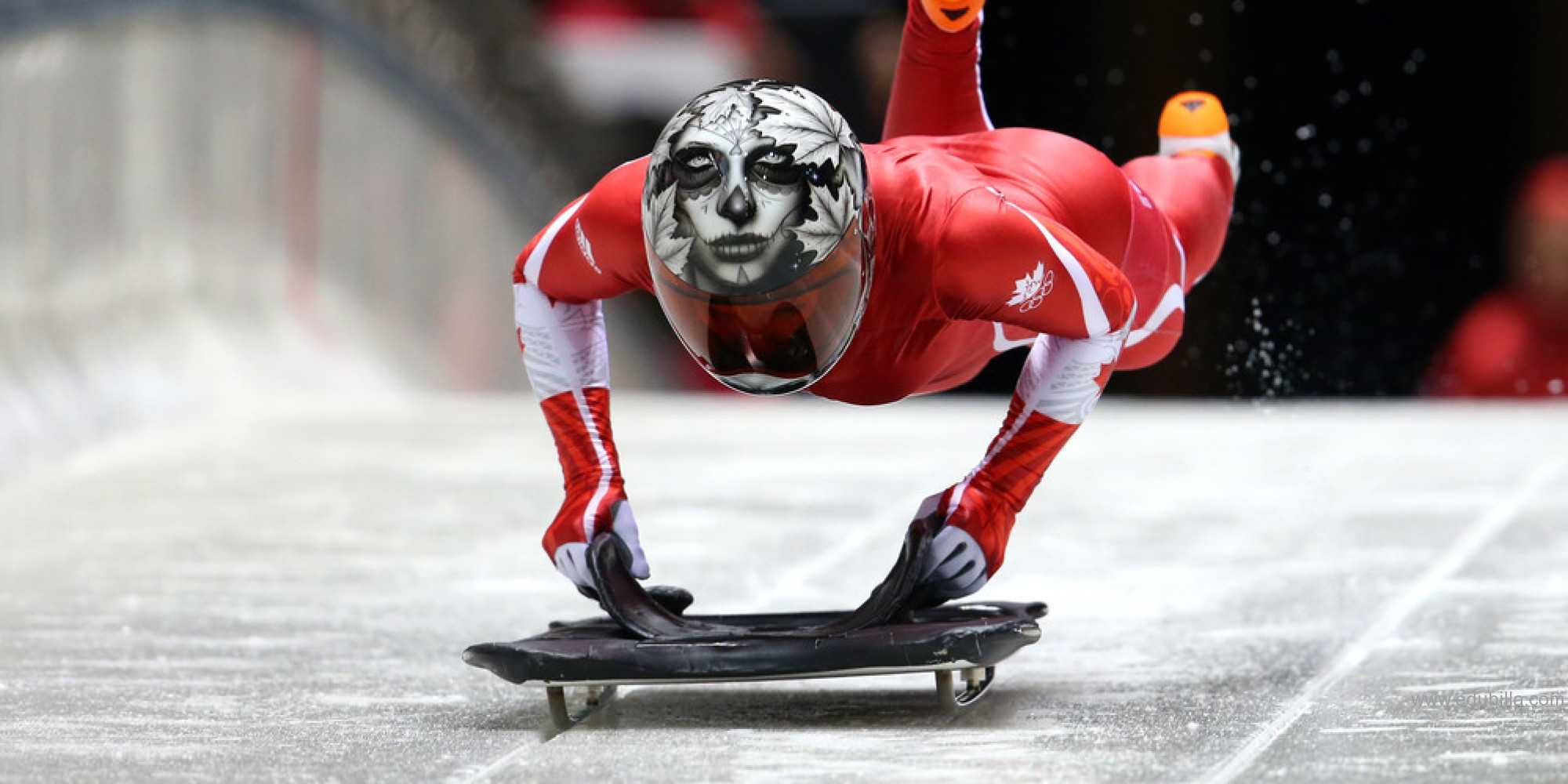
Overview Of Skeleton (sport)
Skeleton is a fast winter sliding sport in which a person rides a small sled down a frozen track while lying face down (prone), during which the rider experiences forces up to 5 g and reaches speeds over 130 km/h (80 mph).The sport was named from the bony appearance of the sled.It was added to the Olympic program for the 2002 Winter Olympics; previously, it had been in the Olympic program only in St. Moritz, Switzerland, in 1928 and 1948.
Skeleton Racing
There are no brakes, no steering and riders fly head first around curves as fast as the space shuttle heads toward space. This isn't some kind of bizarre death race - it's skeleton racing and it reappeared at the Olympics in 2002 for the first time in more than 50 years.
Skeleton Racing - How It Started
Skeleton racing was invented by British tourists in Switzerland in the 1800s. Sliders would race down a hill between two towns and the winner would receive a bottle of champagne. The sport received its name when a new sled that was made mostly of metal was introduced. People thought it looked like a skeleton.
Skeleton Racing - How It Works
Sliders push the skeleton for about 40 meters before diving onto the sled headfirst and tucking their arms under their body. They then fly down an icy and curvy track at speeds of nearly 90 miles per hour. While going through some curves, sliders experience five Gs of force - the equivalent of a space shuttle takeoff. The sleds have no brakes or steering wheel - sliders control the sled by turning their bodies. The only way to stop is to run out of slope or crash into something.
Skeleton Racing - The Olympic Story
Skeleton appeared at the Olympics for the first time in 1928 - and then disappeared until the 1948 Winter Olympics. The IOC dropped the sport again until 2002. The 2002 Winter Olympics were the first time women were allowed to compete in the sport. Americans proved to be the top sliders in skeleton racing's return to the Olympics. Jimmy Shea won the gold medal for the USA, becoming the third generation in his family to compete in the Winter Olympics. His dad competed in cross-country skiing at the 1964 Winter Olympics and his grandpa won two Olympic gold medals in speedskating events at the 1932 Games. American Tristin Gale won the women's skeleton event while sporting red, white and blue streaks in her hair. Fellow American, Lea Ann Parsley took the silver. It was all downhill for the US in 2006 though, with Canada and Switzerland stepping up their game to take the five of the six skeleton medals. The sixth medal went to Great Britian.
Skeleton Racing - Crash and Burns
When sliders are racing at high speeds on a sled with no brakes, it's not surprising that there are a lot of wipeouts and injuries. Lots of racers strain their necks going around the turns or bang their heads against the track. Chris Soule, who races skeleton for the United States, lost his grip on the handle of a sled during a qualifying race. He tried to grab on again but his hand got caught between the sled and the wall and the pressure split his palm open. In 2001, a racer in Latvia was killed when his sled plowed into an empty bobsled that was on the track.
Game Rules
The Start
The start is authorized by an audio and visual signal, and from that point, the athlete has 30 seconds to start the run. The competitor may accelerate the sled by pushing it; any other help during the starting procedure is prohibited.
The Race/The Finish
During the race only the prone position (lying on the stomach) is allowed. The athlete may leave the sled in order to push or move it, but he or she must pass the finish line on the sled for the run to count.
Participants
Each NOC may enter a maximum of three athletes in both the men's and women's competitions. A nation has the right to choose which athletes it enters. The maximum number of athletes each country may send is determined by the ranking of nations during the 2009-10 World Cup season.
In the men's competition, the top three countries in the nations standings may enter three athletes. Nations ranked 4-10 may enter two athletes and nations ranked 11-17 may enter one athlete.
In the women's competition, the top two countries in the nations standings may enter three athletes. Nations ranked 3-6 may enter two athletes and nations ranked 7-12 may enter one athlete.
Equipments Need For Skeleton (sport)
Brakes
There are no brakes. Competitors attempting to slow down on the course are disqualified. At the end of the run the athlete slows the sled down with his or her feet.
Bumpers
Front and rear bumpers absorb shocks and protect the athlete from the wall.
Frame
Early frames bore a vague resemblance to a skeleton, which is how the sport acquired its name.
Gloves
These are usually made of leather and worn for protection.
Handles
Handles are used for the start push and during the race. They must be covered with soft material.
Helmet
All competitors must wear helmets, which are hard plastic and equipped with a chin guard and visor.
Racing suit
The racing suit is a tight-fitting bodysuit made of elastic fabric that may have padding sewn into the elbows.
Shoes
They are made of synthetic material and have spikes on the soles for traction during the start push.
Sled
The sled is made of two runners. The frame must be constructed of steel. The same sled must be used in all the heats of the competition. It may weigh no more than 43kg for men and 35kg for women.
History Of Skeleton (sport)
Skeleton racing involves plummeting head-first down a steep and treacherous ice track on a tiny sled. It is considered the world's first sliding sport.
Skeleton Timeline:
1882-In 1882, when skiing was still unknown in central Europe, English soldiers constructed a toboggan track leading from Davos to Klosters in Switzerland. The course was similar in design to the very popular Canadian tracks, but they were no more than a straight slide down. In order to make it more challenging, curves were inserted in the Davos track. It was used for descents on toboggans, which, at that time, were already divided into three categories according to whether they were of Canadian, American or Swiss origin.
1892-In 1892, an Englishman, Mr. Child, surprised his sports friends with a new sled made mostly from metal. Some speculate that since the sled looked like a skeleton, it was thusly called. Others claim that the name "Skele" derives from an incorrect Anglicization of the Norwegian word "Kjaelke". Both explanations may be correct but what is certain is that, from that time on, the sport known both as tobogganing and skeleton has been exciting and intriguing by any name.
1905-In 1905, skeleton was practiced for the first time outside Switzerland, on the occasion of a bobsleigh competition at Muerzzuschlag in Styria (Austria).
1908-One year later, in 1906, the first Austrian championships were held there. In 1908 and 1910, competitions were also carried out on the Semmering Mountain near Vienna.
1923-In 1923, the IBSF, originally FIBT was formally constituted. According to the minutes of the FIBT Paris Congress in 1926, the International Olympic Committee declared bobsleigh and skeleton Olympic sports. This Congress decided to accept the skeleton rules of St. Moritz, Switzerland, as valid for all competitions.
1928-In 1928, at St. Moritz, the American Jennison Heaton won the first Olympic gold medal in skeleton. His younger brother, John, was runner-up.
1948-In 1948 - 20 years later - the fifth Olympic Winter Games were again held in this fashionable winter sports resort in the Engadine. Thirteen athletes from five countries took part. Italian Nino Bibbia, who lived in St. Moritz, won the title after six runs, and John Heaton won his second Olympic silver medal. In later years, Bibbia achieved victories in 200 more skeleton competitions.
1969-The opening of the first artificially refrigerated bobsleigh and luge track in 1969, at Königssee/Berchtesgaden in Germany, offered athletes the first opportunity to plan and carry out practice and competition regardless of weather conditions.
1970-In 1970, a new sled was created from the traditional skeleton used on the Cresta in St. Moritz. The new "bobsleigh skeleton" was specifically designed for use on bobsleigh runs. As the sport grew in popularity, new rules and regulations evolved through the IBSF to assure uniformity and fairness.
1986-Since 1986, International Skeleton Schools have been organized on various tracks. The newly founded Skeleton Commission introduced Solidarity Programs to facilitate new members in skeleton activities. The IBSF began special training programs to encourage national federations to improve their athletes’ training.
1987-With the participation of 12 countries in the 1987 European Championships, the IBSF Executive Committee met the minimum criteria for re-introducing the World Championships. In addition, new tracks in Calgary, Albertville and Lillehammer offered further opportunities for practicing skeleton. Many bobsleigh nations now realized the advantage of the argument always propagated by the skeleton officials - to train young, aspiring athletes via skeleton for their future career in bobsleigh.
1992-In 1992, 20 countries took part in the World Cup series. A year later, the number increased to 23. In 1994, IBSF reached its target of 25 countries, fulfilling the demand of its IBSF Executive Committee. At present, skeleton is practiced on a competitive level by some 30 countries from six continents.
2002-Skeleton competition returned to the Olympic Winter Games in 2002 with men’s and women’s competition in Park City, Utah, ending its 54-year absence from the world’s most prestigious sports competition. The sport continued as an Olympic discipline in Cesana, Italy in 2006, in Whistler/Vancouver in 2010 and in Sochi in 2014. The new track in PyeongChang will also welcome all the skeleton athletes in 2018.
2004-The IBSF combined its World Championships at Königssee in 2004, offering skeleton, men’s bobsleigh and women’s bobsleigh events on one track over two weeks. Prior to this, Skeleton and women’s bobsleigh held separate World Championships.
2007-Participation in skeleton has increased significantly as a result of its return to the Olympic program. Europa Cup and North American Cup events have attracted large fields. In 2007-2008 the IBSF added an Intercontinental Cup circuit, one level below the World Cup, to provide additional skeleton competitions.
2006-t the 2006 Turin Winter Olympic Games in Italy, Canada achieved outstanding results with Duff Gibson's gold medal, Jeff Pain's silver medal, and Melissa Hollingsworth's bronze medal. In addition, Melissa Hollingsworth captured the overall Women's World Cup Championship that same year.
2010-In 2010, Canada continued to dominate at the Olympic level with Jon Montgomery winning gold at the Vancouver Winter Olympics.
Origin Of Skeleton (sport)
The skeleton originated in St. Moritz, Switzerland, as a spinoff of the popular British sport called Cresta sledding. Although skeleton "sliders" use equipment similar to that of Cresta "riders", the two sports are different: while skeleton is run on the same track used by bobsleds and luge, Cresta is run on Cresta-specific sledding tracks only.
Thrill-seeking tourists:
Sleighing is one of the oldest winter sports. Descriptions of the sport can be found in 16th-century literature, but as a racing sport it can be traced to the mid-19th century, when British tourists started sliding down snowbound roads in the Alps. British and American holidaymakers built the first toboggan run in Davos in 1882.
The Cresta run:
Skeleton sled racing owes it entire early history to St Moritz and the famed Cresta Run. The sport developed in the Swiss resort town as a pursuit for the rich. E. F. Benson put it best when he wrote in 1913, “There is one Mecca, there is one St Peter's, and there is one Cresta.”
Olympic history:
Men’s skeleton made two early appearances on the Olympic programme at its “ancestral” home of St. Moritz in 1928 and 1948. It was then dropped until it reappeared as a men’s and women’s event at Salt Lake City in 2002.
First Competition:
The sport's first organized competition took place in the late 1800s in the Swiss village of St. Moritz. Riders raced down the frozen road from St. Moritz to Celerina on simple sleds, and the winner received a bottle of champagne.
First Women's Championships:
Canadian women have been prominent in the sport, since the first officially sanctioned women's international race was held in Konigssee, Germany in 1996. Michelle Kelly won her first race later that same season – the start of many successes for Canadian women. At the first ever women's World Championships, in 2000 in Igls, Austria, Mellisa Hollingsworth captured the silver medal. Canadian success continued, when Lindsay Alcock brought another silver medal home to Canada, from the 2004 World Championships in Konigssee, Germany.
First Official Toboggan Race:
The first official toboggan race was in 1884 and the first known skeleton event was in 1887. In fact, it was skeleton racing which laid the foundation for the sport of bobsleigh.
Governing Bodies
International Bobsleigh and Skeleton Federation(FIBT):
The International Bobsleigh and Skeleton Federation is the international sports federation for bobsleigh and skeleton. It acts as an umbrella organization for 14 national bobsleigh and skeleton associations as of 2007. The Federation was founded on November 23, 1923 by the delegates of Great Britain, France, Switzerland, Canada and the United States at the meeting of their first International Congress in Paris, France. The FIBT headquarters are in Lausanne, Switzerland
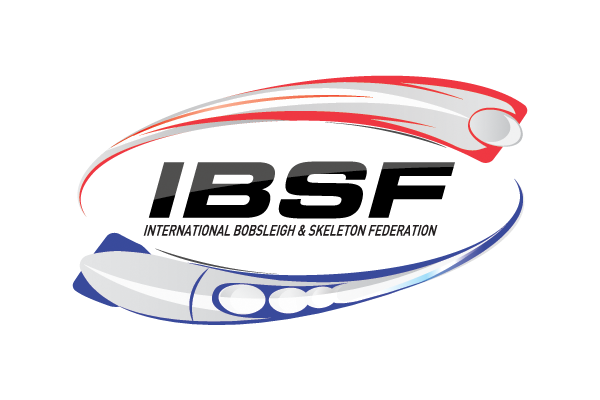
1995-FIBT At the 1995 World Champion-ships in Winterberg, no fewer than eight nations placed in the top ten in the four-man event while seven nations were rerepresented in the top ten of the two-man competition.
History – Bobsleigh:
World's First Bobsleigh Club:
The world's first bobsleigh club was founded in St. Moritz, Switzerland in 1897. By 1904, competitions were taking place on natural ice courses (Olympia Bobrun St. Moritz-Celerina). This growth led to the creation of the FIBT in 1923 with inclusion into the International Olympic Committee (IOC) the following year. At the 1924 Winter Olympics in Chamonix, the four-man event took place.
First FIBT World Championships:
In 1930, the first FIBT World Championships took place with the four-man event in Caux-sur-Montreux, Switzerland with the first two-man event taking place in Oberhof, Germany the following year
Winter Olympics:
At the 1932 Winter Olympics in Lake Placid, New York, the two-man competition debuted. In 1935, the Internationaler Schlittensportsverband (ISSV - International Sled Sport Federation in (German)), a forerunner to the Federation Internationale de Luge de Course (FIL - International Luge Federation in (French)), was absorbed into the FIBT and a Section de Luge was created.
History – skeleton:
Skeleton was also founded in Switzerland in 1884 as part of the Cresta Run. It remained a Swiss competition until 1906 when the first competitions outside Switzerland took place in Austria. At the 1926 FIBT World Congress in Paris, France, it was approved that skeleton was an official Winter Olympic sport with competition taking place at the 1928 Winter Olympics in St. Moritz. 13 competitors from five nations took part. Twenty years later, skeleton reappeared on the Olympic program when the 1948 Winter Olympics returned to St. Moritz.
At the 1954 IOC meeting in Athens, Greece, skeleton was replaced by luge on the official Olympic program. This caused skeleton to fall into obscurity until the development of a "bobsleigh skeleton" which could be used on any bobsleigh track in 1970. The development of artificial tracks would also help the rebirth of skeleton as a sport.
Presidents:
The following persons have served as president of FIBT:
-Count Renaud de la Frégeolière from France (1886–1981), served 1923–1960
-Almicare Rotta from Italy (1911-1981), served 1960–1980
-Klaus Kotter from West Germany/Germany (1934–2010), served 1980–1994
-Robert H. Storey from Canada (born 1942), served 1994–2010
-Ivo Ferriani from Italy (born 1960), served since 2010
Championships:
-Bobsleigh at the Winter Olympics
-Bobsleigh World Cup
-FIBT World Championships
-Skeleton at the Winter Olympics
-Skeleton World Cup
Awards Related To Skeleton (sport)
USA Bobsled & Skeleton:
The USA Bobsled & Skeleton honors athletes for their season accomplishments with an award ceremony at the National Team Camp each summer. The coaching staff selects winners for the Athlete of the Year, Rookie of the Year and Team of the Year awards, while athletes vote for a team member in their discipline to receive the Athletes' Choice awards.
Categories:
Women's Bobsled Athlete of the Year
Women's Bobsled Athletes' Choice
Men's Bobsled Athlete of the Year
Men's Bobsled Athletes' Choice
Skeleton Athlete of the Year
Skeleton Athletes' Choice
Rookie of the Year
Sample Documents Of Skeleton (sport)
-Viswanathan Anan



